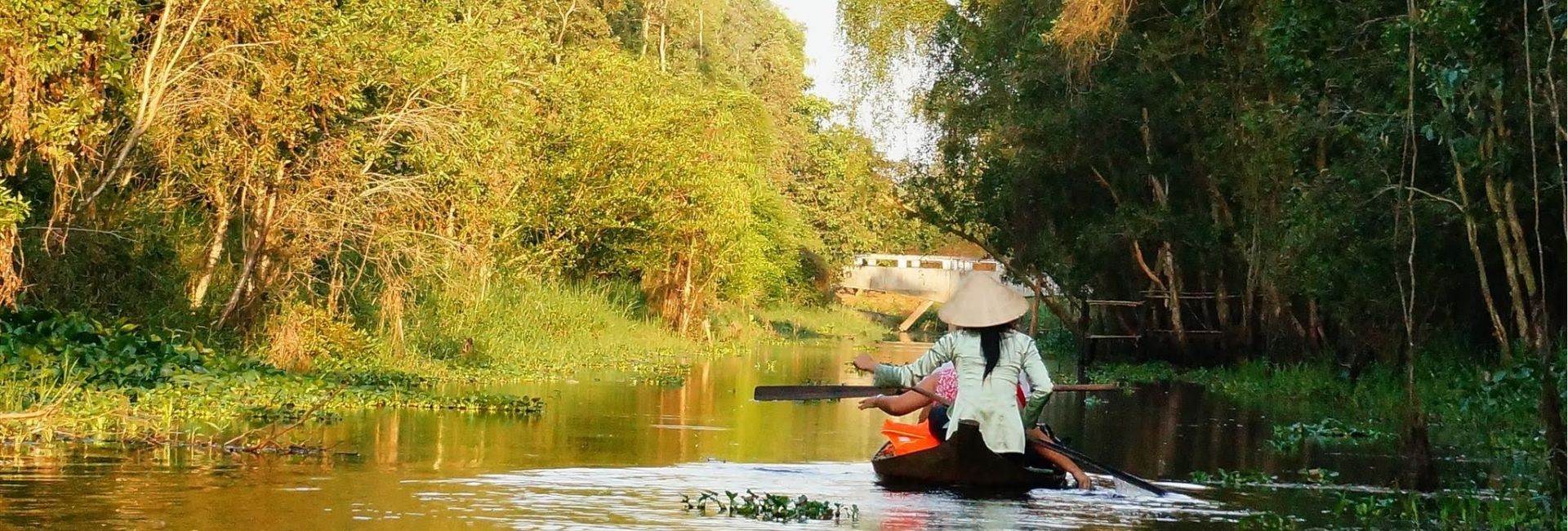Located in the southern part of the country, the Mekong Delta is a mesmerizing region known for its rich cultural heritage, lush landscapes, and vibrant river life. In this travel blog, we will explore the top 10 best what to do in the Mekong Delta Vietnam, providing you with valuable insights and recommendations to make the most of your visit.
10+ best what to do in the Mekong Delta Vietnam
1. Take a Mekong sampan cruise through small canals
When exploring the Mekong Delta, you should not miss taking a Mekong sampan cruise through the small canals. You can glide along the serene waterways, enveloped by lush greenery and picturesque landscapes. This enchanting journey allows you to witness the authentic daily life of riverside communities.
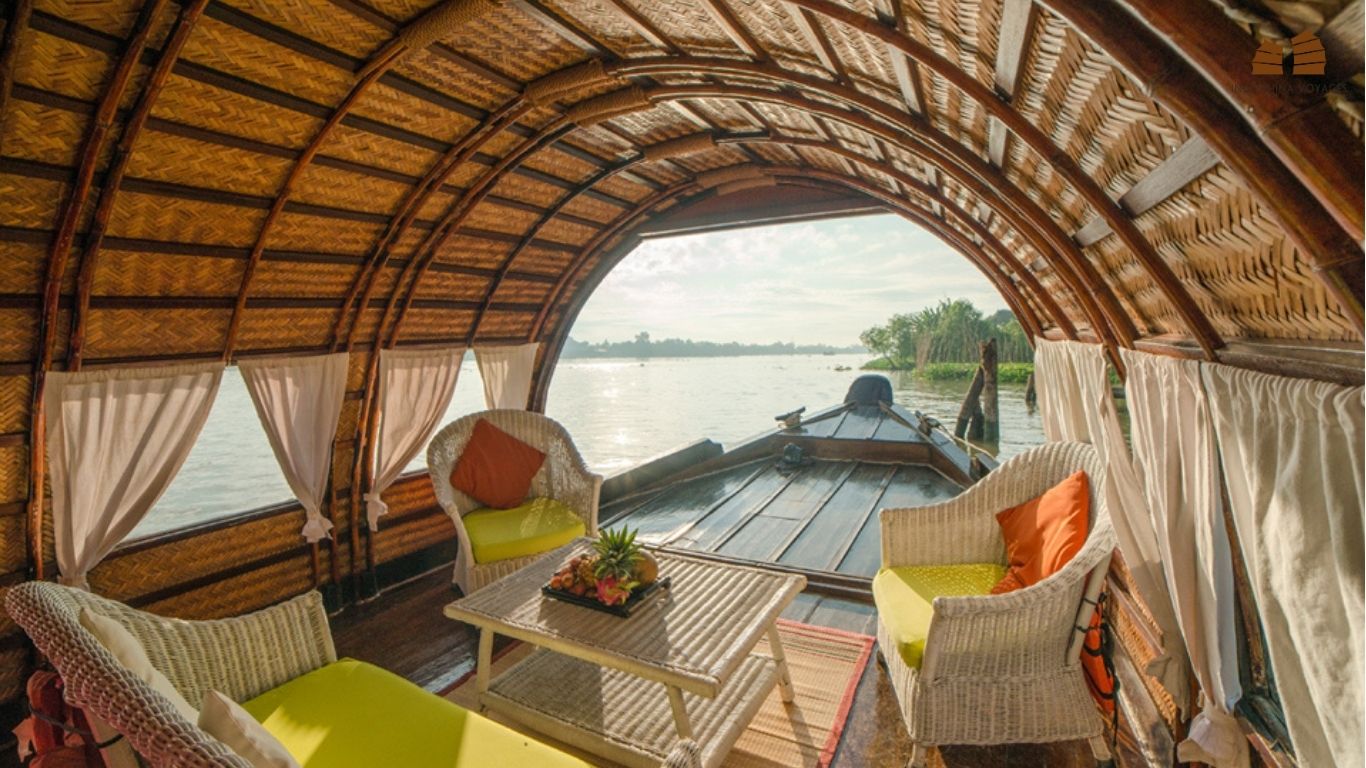
2. Join a rice paper-making workshop
If you want a more interesting experience while exploring the Mekong Delta, then join a rice paper-making workshop. Here, you can have a chance to immerse yourself in the age-old tradition of crafting this essential Vietnamese delicacy.
By participating in this hands-on experience, you’ll learn the meticulous process of transforming rice flour into thin, delicate sheets of rice paper. Engage with skilled artisans who will guide you through each step, from pounding the rice grains to spreading the batter onto heated griddles.
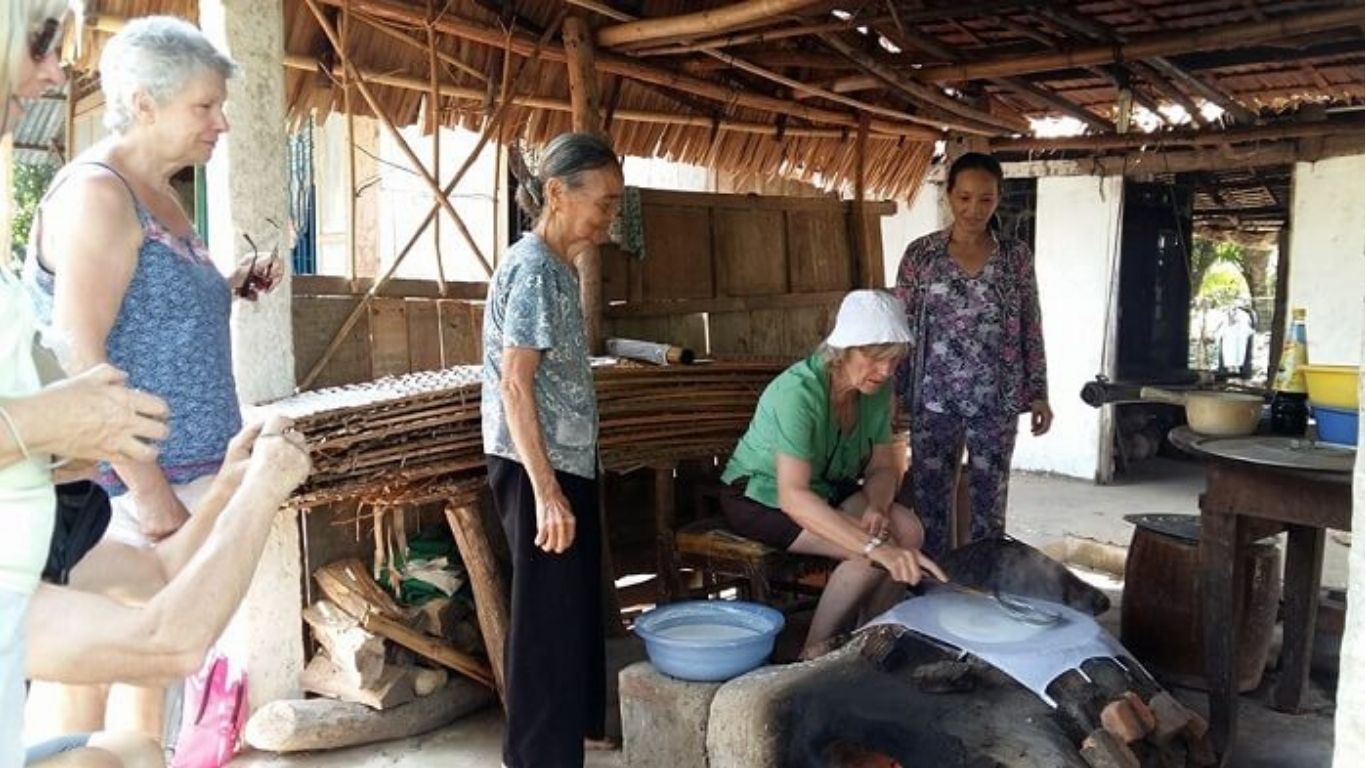
Some rice paper-making workshops for your reference:
- Tan Dinh rice paper-making workshop in Tien Giang province
- Thanh Tri rice paper-making workshop in Can Tho city
- Cho Lach rice paper-making workshop in Ben Tre province
3. Cham village at Tan Chau, An Giang
One fascinating experience that is rarely mentioned in other travel blogs about the Mekong Delta is exploring the Cham village at Tan Chau, An Giang. As you explore the village, you’ll be greeted by the sight of stunning temples adorned with intricate carvings and vibrant colors. These architectural wonders serve as a testament to the Cham people’s religious and artistic traditions.
Take the time to visit the Cham houses, built in a traditional style with distinctive features that reflect the community’s way of life. Inside, you may have the opportunity to witness the skilled artisans at work, creating intricate textiles and handicrafts using age-old techniques passed down through generations.
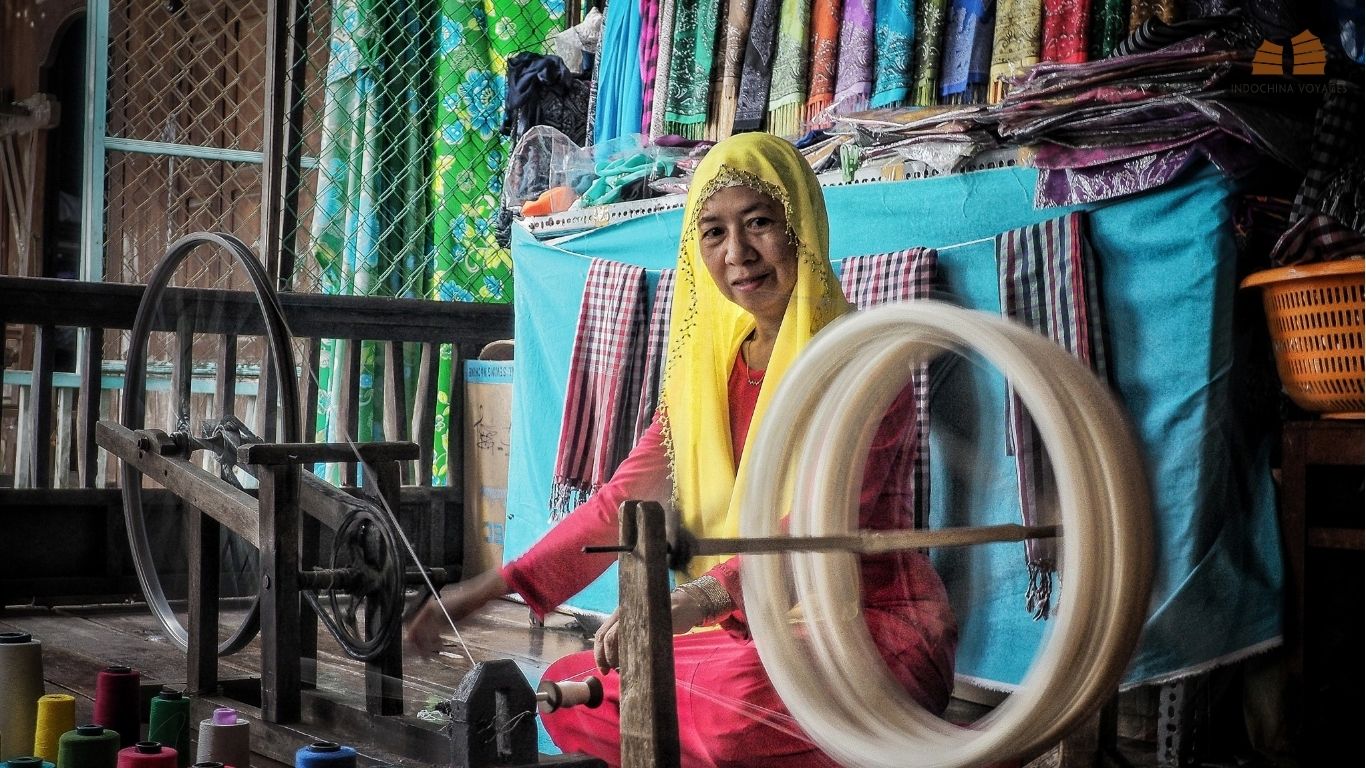
4. Take a cooking class with a local chef
For a more hands-on experience in the Mekong Delta, take a cooking class. As you embark on this culinary journey, you’ll have the opportunity to delve into the heart of Mekong Delta cuisine, learning the secrets and techniques that make it so unique.
The local chef will guide you through the vibrant local markets, where you’ll handpick fresh ingredients and then learn to prepare local dishes such as Goi Cuon (Fresh Spring Rolls), Banh Xeo (Vietnamese Savory Pancake), giving you a deep understanding of local life.
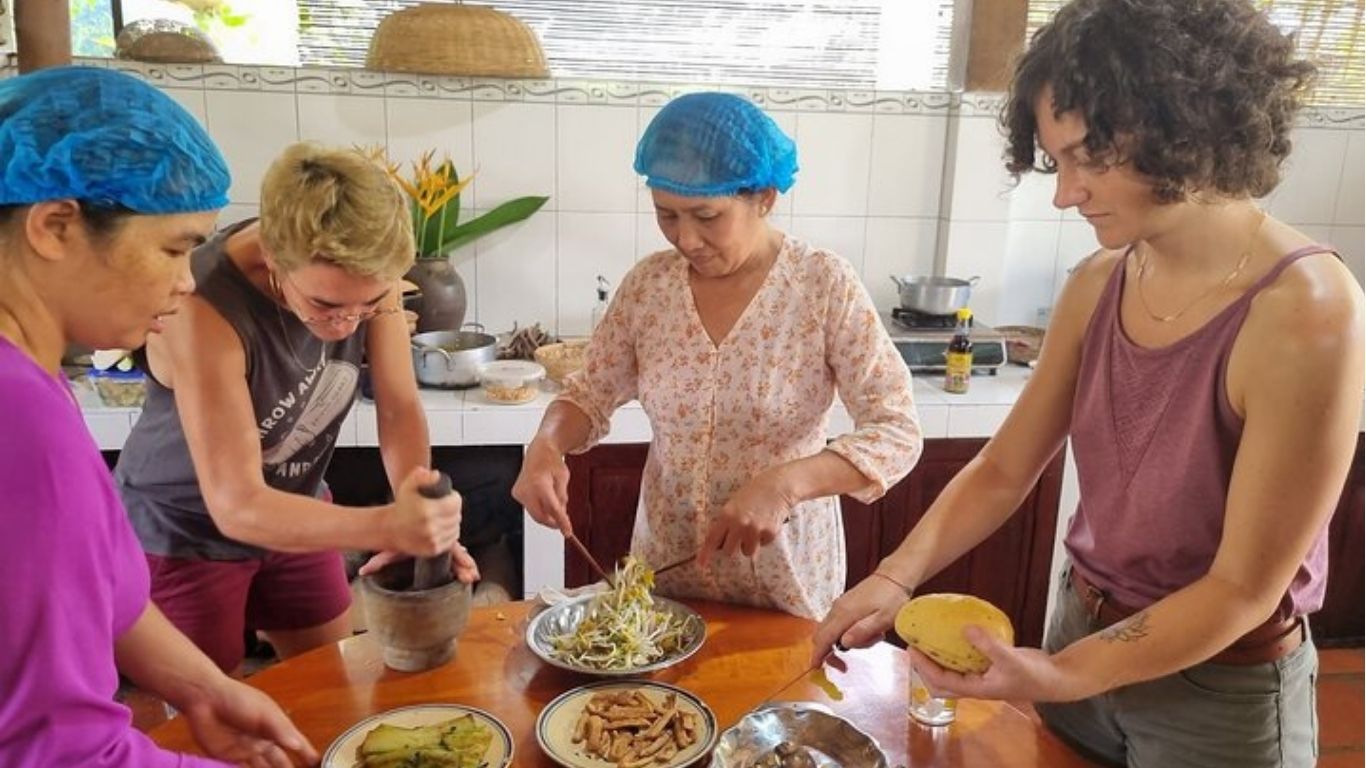
5. Cycling at An Binh island
If you want to appreciate the spectacular landscapes and fresh air of the Mekong Delta’s countryside, cycling at An Binh Island is an absolute must. Take your time pedal along the tranquil pathways, passing by charming villages, and idyllic rice fields.
As you explore, you’ll encounter friendly locals going about their daily lives and have the opportunity to witness the timeless traditions of the delta.

6. Can Gio Mangrove Biosphere Reserve
For nature lovers seeking unique what to do in the Mekong Delta, a visit to the Can Gio Mangrove Biosphere Reserve is a must-do. As you navigate deeper into the reserve, you can witness a wide range of wildlife species including monkeys, birds, and even elusive crocodiles.
One of the highlights of a visit to Can Gio is the canopy walk. From this vantage point, you’ll have a view of the expansive mangrove forests and the intricate network of water channels below.
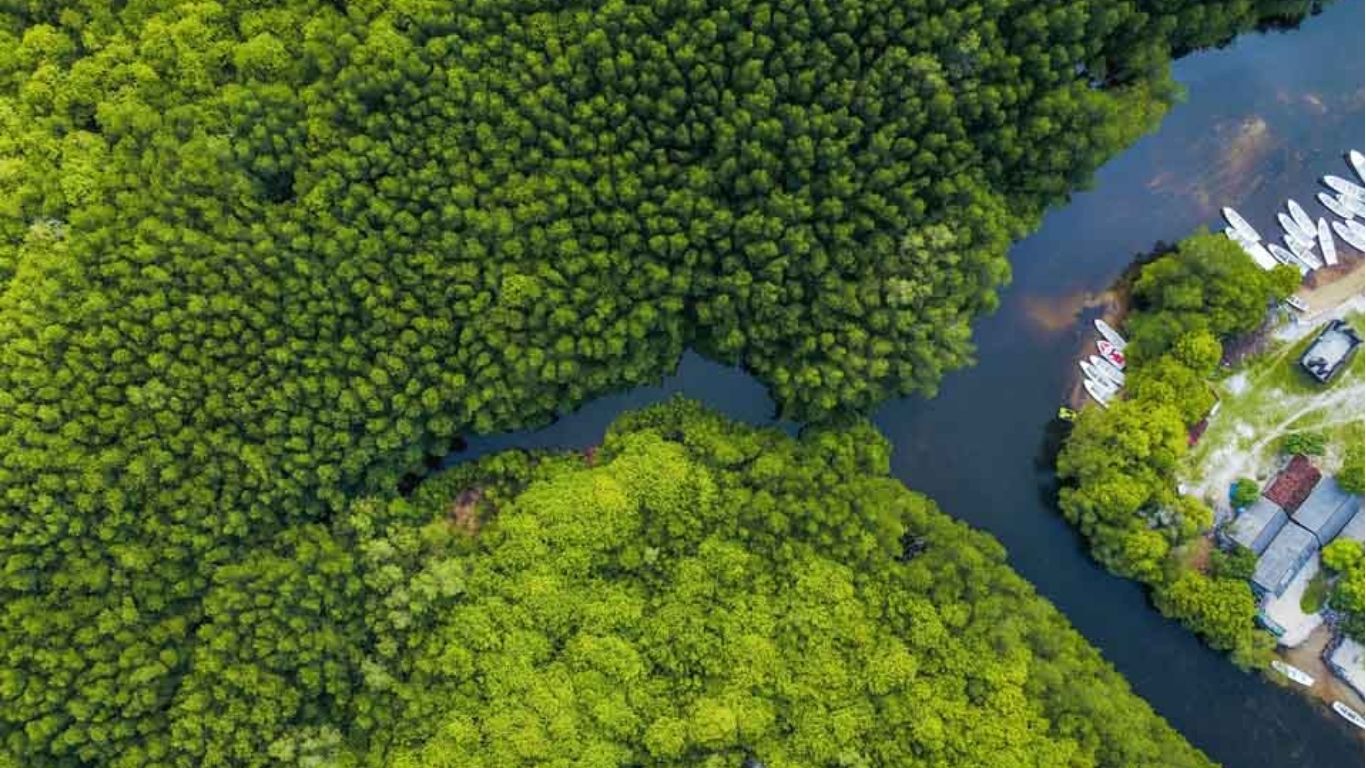
7. Visit and taste fresh fruits in local gardens
The Mekong Delta is known as the “fruit bowl” of Vietnam, and here you’ll encounter a wide variety of tropical fruits, including jackfruits, dragon fruits, and rambutans.
Spend your time wandering through the lush gardens, where you can pluck ripe fruits straight from the trees and savor their juicy sweetness. Don’t forget to engage with the farmers to gain a deeper understanding of their sustainable farming practices.
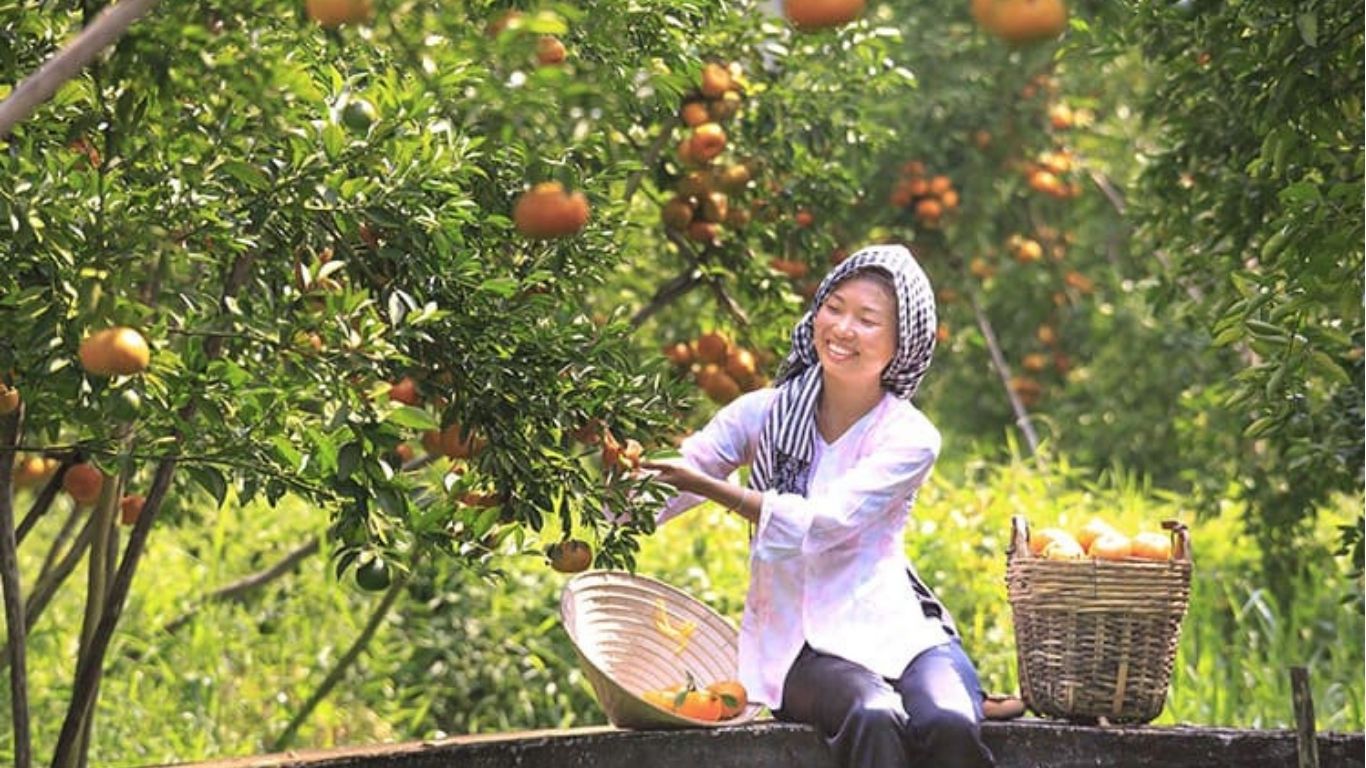
8. Sam Mountain
If you want to discover more about cultural and historical significance, head to the sacred Sam Mountain. The mountain is adorned with numerous pagodas and temples, each with its own unique architectural style and spiritual ambiance such as Ba Chua Xu temple, Hang Pagoda…
Besides, this mountain offers you an opportunity to connect with nature. As you ascend the steps of this sacred mountain, you will be rewarded with stunning vistas of the surrounding countryside.
What can you expect in Sam Mountain?
- Panoramic views: Sam Mountain offers stunning panoramic views of the countryside, paddy fields, and the Hau River. You can climb to the top or find vantage points along the way for picturesque landscapes.
- Spiritual and Religious Sites: Sam Mountain is a religious site with temples, pagodas, and shrines like Ba Chua Xu Temple, Tay An Pagoda, and Thoai Ngoc Hau Tomb. You can explore and learn about local religious practices.
- Cave Exploration: Sam Mountain has various accessible caves for exploration, including Hang Pagoda Cave with a Buddhist shrine for a unique underground experience.
- Sunset and sunrise views: Sam Mountain offers a peaceful and picturesque setting to witness the changing colors of the sky over the Mekong Delta.
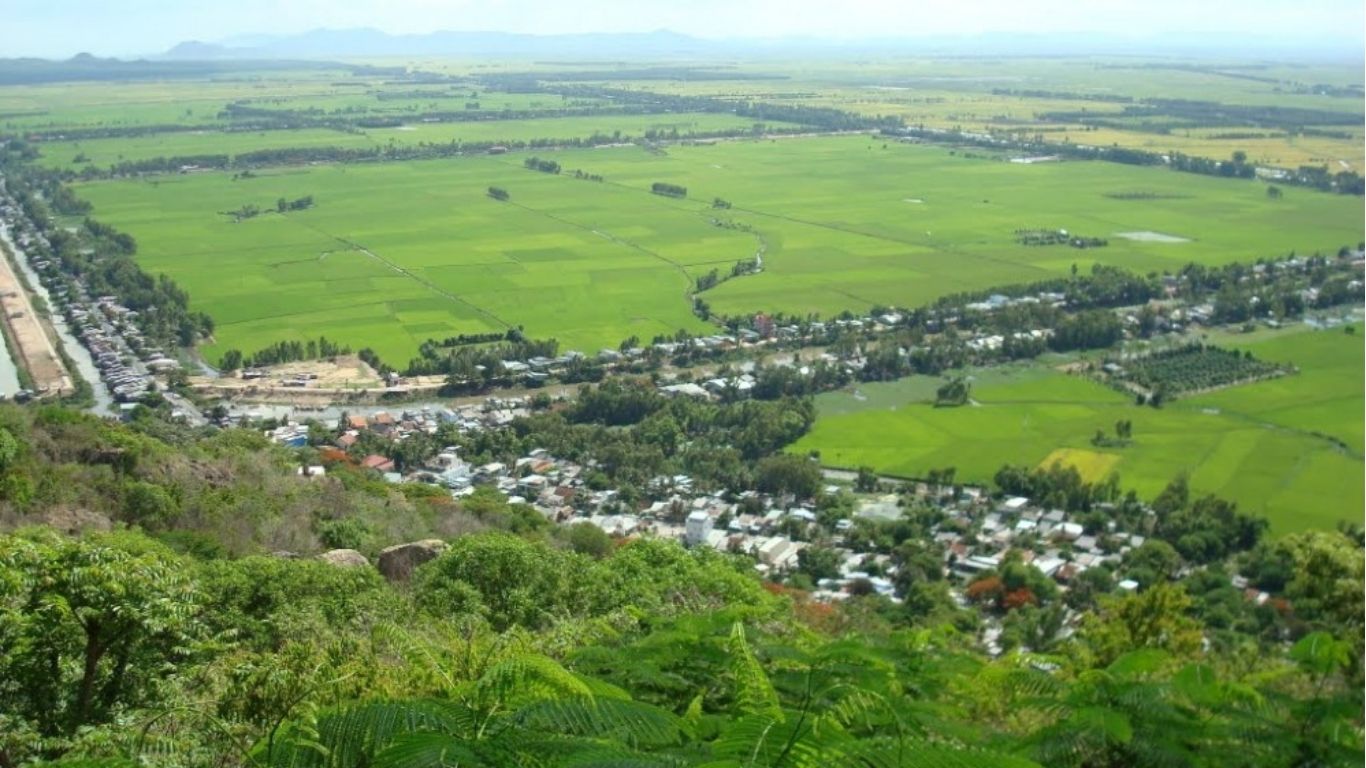
9. Visit floating markets
Floating markets are a highlight of any visit to the Mekong Delta, offering a glimpse into the vibrant riverine culture of the region. From fresh fruits and vegetables to seafood, spices, and handicrafts, the variety of products available is astounding.
Some suggested floating markets when visiting the Mekong Delta:
- Cai Rang Floating Market: near Can Tho City, is the largest and most famous market in the Mekong Delta. It offers a bustling atmosphere and a diverse array of goods.
- Phong Dien Floating Market: situated on the Hau River, provides an authentic and charming experience, with a more tranquil ambiance than Cai Rang.
- Long Xuyen Floating Market: located in An Giang Province, showcases the vibrant river life of the Mekong Delta, featuring agricultural products, seafood, and handicrafts.
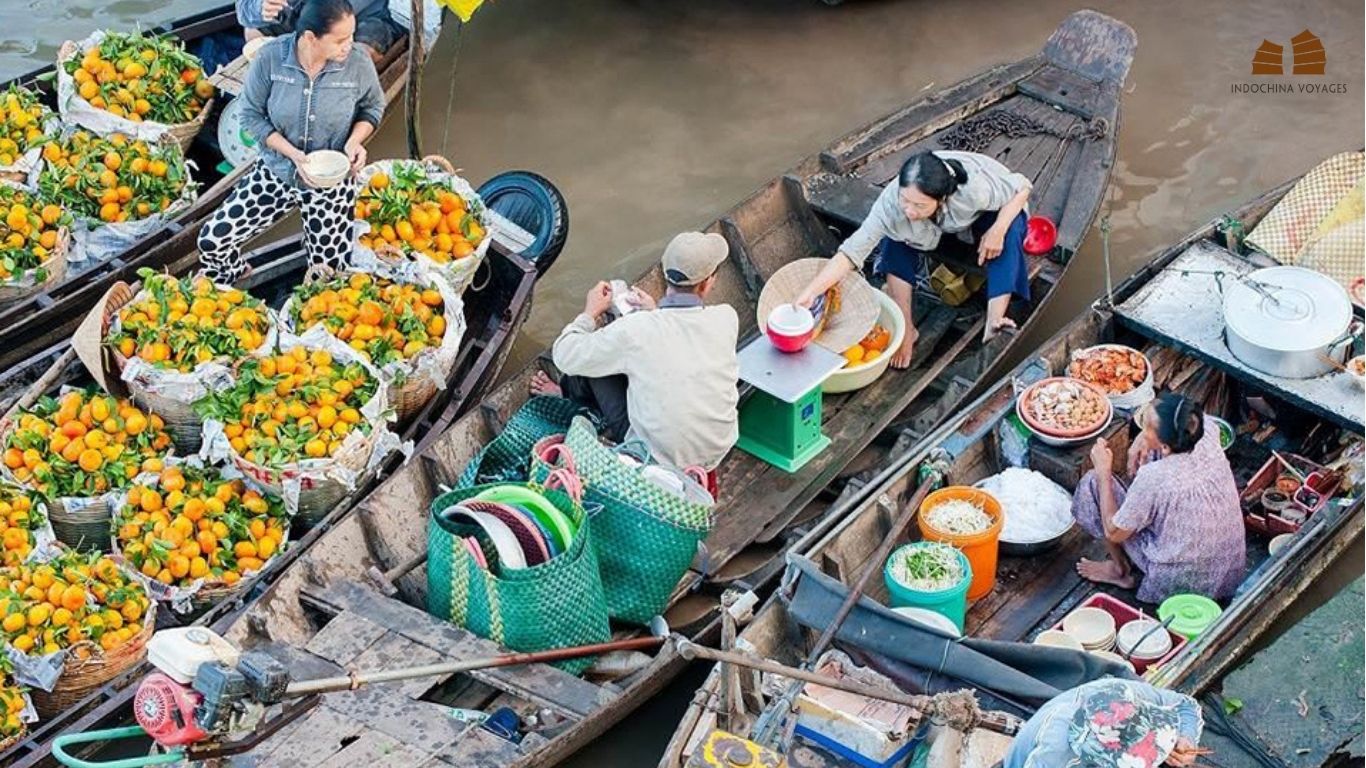
Helpful tips:
- Go early: It’s advisable to arrive at the floating market as early as possible. This way, you can witness the market in its most authentic form, with locals conducting their daily business before it becomes crowded with tourists.
- Learn basic Vietnamese phrases to connect with locals and create more genuine interactions. Greeting people in their language and showing interest in their culture can go a long way.
10. Experience local homestay
To truly immerse yourself in the authentic charm of the Mekong Delta, there’s no better way than to experience a local homestay. You’ll get a glimpse into the daily lives, customs, and traditions of the locals.
Don’t forget to engage in conversations with your hosts, who will gladly share stories about their way of life and provide insights into the cultural fabric of the Mekong Delta.
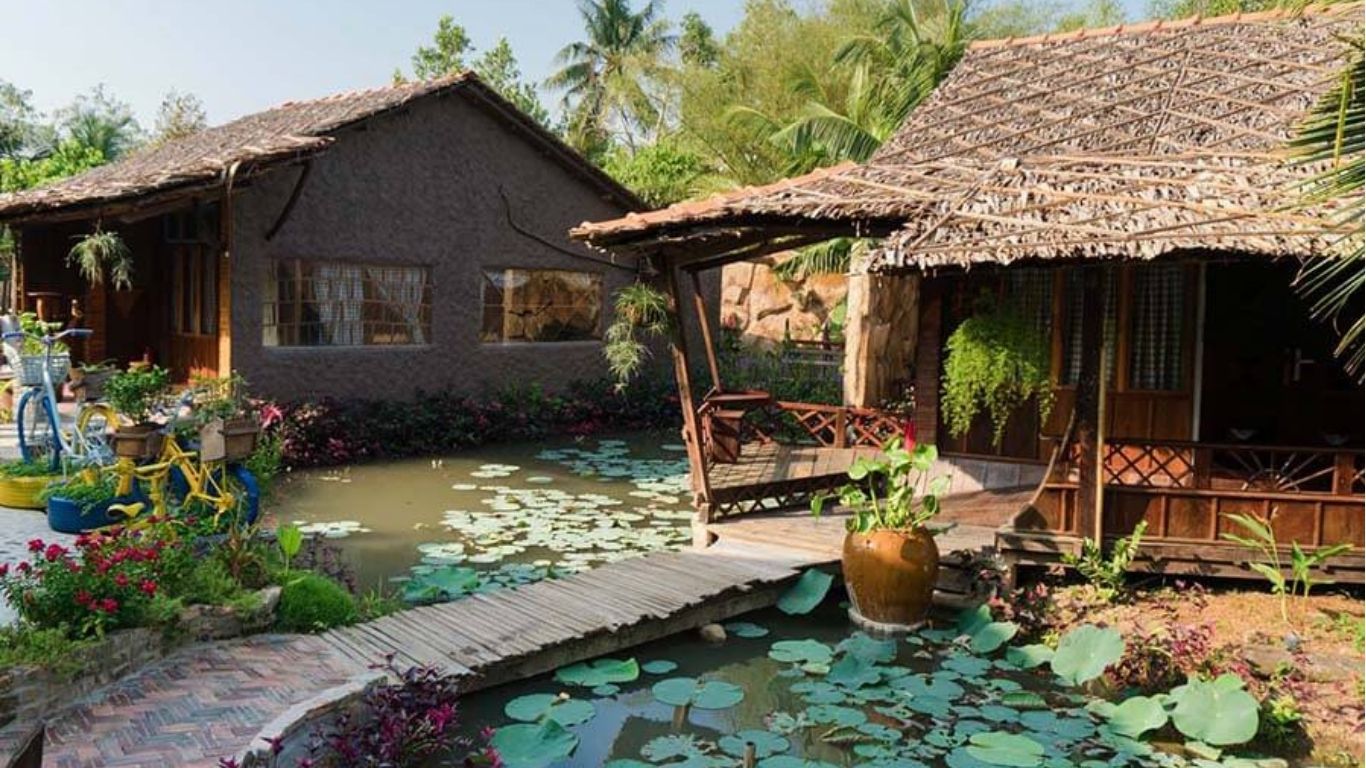
Must-try local dishes
Mekong Delta cuisine is a culinary treasure that showcases the vibrant flavors and diverse ingredients of Vietnam’s southern region. Here are some must-try dishes when you’re here:
- Hu tieu: this noodle soup offers a harmonious blend of chewy rice noodles, fragrant broth, and your choice of succulent seafood, tender slices of pork, or flavorful chicken.
- Banh xeo: a crispy pancake filled with bean sprouts, shrimp, and pork, served with fresh herbs and a dipping sauce.
- Ca kho to: a clay pot dish featuring caramelized fish cooked in a savory sauce infused with garlic, ginger, and aromatic spices.
- Canh Chua: or Sour Soup, is a tangy and refreshing soup that combines sweet, sour, and spicy flavors, made with tamarind, fish, pineapple, tomatoes, and herbs.
- Banh bo: a steamed rice cake with a soft and chewy texture, is a popular choice for dessert.
When is the ideal time to visit the Mekong Delta?
The best time to visit the Mekong Delta depends on your personal preferences and interests because this region is a dynamic destination throughout the year, and each season offers its own unique charm.

Dry Season (From December to April): peak tourist season in the Mekong Delta. This time is particularly ideal for those seeking a leisurely and relaxed experience like cycling, boating, and visiting floating markets. The dry season is also the harvest time for many fruits like durian, rambutan, and mangosteen, offering you an opportunity to indulge in the flavors of the region.
Rain Season (From May to November): The wet season also sees fewer tourists, allowing for a more authentic and intimate experience with the local culture. It’s a great time for nature lovers and photographers to capture the region’s stunning scenery.
How to get to the Mekong Delta?
Getting to the Mekong Delta can be done through various transportation options. Here are a few common ways to reach the region:
- By air: The easiest way to reach the Mekong Delta is by flying to Tan Son Nhat or Can Tho airports. These airports have domestic and international connections, providing convenient access to the region. Upon arrival, you can hire a taxi or arrange a private transfer to your destination within the Mekong Delta.
- By bus: Buses are a common and economical way to travel to the Mekong Delta from Ho Chi Minh City. The journey takes around 2 to 4 hours, depending on the destination and traffic.
- By private car: Private car hire offers convenience and flexibility. You can hire a private car from Ho Chi Minh City or other nearby cities. It allows you to control your itinerary, make stops, and explore attractions along the way.
- By cruise: These cruises typically depart from Ho Chi Minh City to the Mekong River, allowing you to experience the region’s scenery and local life firsthand.
Some top-rated cruises in the Mekong Delta:
Hope this Mekong travel guide is useful for you to plan a perfect Mekong Delta tour. If you have any questions or require helpful assistance, please do not hesitate to contact our Luxury Mekong Cruise; our team will always welcome you enthusiastically!
From Luxury Cruise Mekong, a brand of Indochina Voyages!

